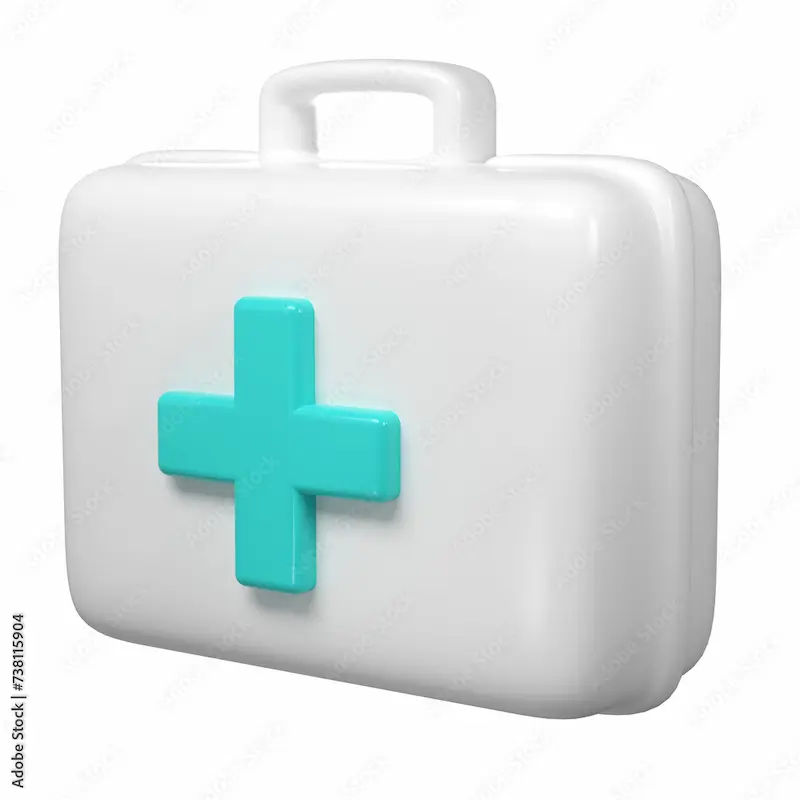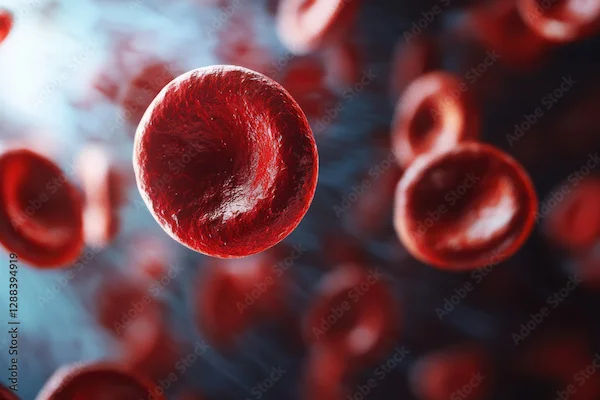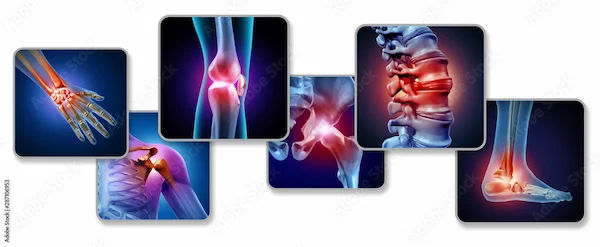Guide to Introduction On Obstructive Sleep Apnea
Learn the basics of Obstructive Sleep Apnea (OSA). Understand the causes, symptoms, and essential treatment options for this common sleep disorder.

Written by Dr. Dhankecha Mayank Dineshbhai
Reviewed by Dr. Mohammed Kamran MBBS, FIDM
Last updated on 7th Oct, 2025
_0.webp?tr=q-80,f-webp,w-350,dpr-2,c-at_max 700w)
Introduction
Do you wake up feeling just as exhausted as when you went to bed, despite getting a full night's sleep? If your partner complains about your thunderous snoring, or you find yourself struggling to stay awake during the day, you might be experiencing more than just poor sleep. You could be among the millions of people living with Obstructive Sleep Apnea (OSA), a common but serious sleep disorder. This introduction to obstructive sleep apnea is designed to demystify the condition. We'll walk you through what it is, why it happens, and how it silently impacts your health. More importantly, we'll explore the clear path to diagnosis and effective treatment, helping you move from fatigued to revitalized. Understanding OSA is the first crucial step toward reclaiming your energy, health, and quality of life.
What Exactly Is Obstructive Sleep Apnea (OSA)?
Obstructive Sleep Apnea is a condition characterized by repeated episodes of partial or complete blockage of the upper airway during sleep. The word "apnea" literally means "without breath." During these apneic events, which can last from 10 seconds to a minute or more, your brain and body are deprived of oxygen, forcing you to partially awaken to resume breathing. This cycle can happen dozens, even hundreds, of times per night, severely fragmenting your sleep architecture without you ever being fully aware of it.
The Simple Mechanics of a Sleep Apnea Episode
Imagine your throat muscles as flexible pillars that hold your airway open. When you fall asleep, these muscles naturally relax. In individuals with OSA, they relax too much. As you inhale, this overly relaxed tissue—often the soft palate, uvula, or tongue—collapses into the airway, obstructing the flow of air. Your chest and diaphragm continue to work harder to draw air in, but the blockage prevents it. Your oxygen levels drop, and your brain, in a panic, sends a jolt of adrenaline to wake you up just enough to tense the throat muscles and clear the blockage. This is often accompanied by a loud gasp, snort, or choke. You then fall back asleep, and the cycle begins again.
OSA vs. Central Sleep Apnea: What's the Difference?
It's important to distinguish OSA from the less common Central Sleep Apnea (CSA). While OSA is a mechanical problem (the airway is blocked), CSA is a communication problem. In CSA, the brain temporarily fails to send the signal to the muscles that control breathing. The airway is open, but the body makes no effort to breathe. Mixed sleep apnea, a combination of both, is also possible. However, obstructive sleep apnea accounts for the vast majority of cases.
Consult Top Specialists
Don't Ignore These Signs: Common and Surprising Symptoms
Many people dismiss the symptoms of sleep apnea as just being a "bad sleeper" or a "heavy snorer." However, the signs are often clear when you know what to look for.
The Classic Nighttime Symptoms
- Loud, Persistent Snoring: Not just light snoring, but snoring that can be heard in other rooms.
- Witnessed Pauses in Breathing: Often reported by a bed partner, this is a hallmark sign.
- Gasping or Choking Sounds: The body's reaction to restarting breathing after an apnea event.
- Restless Sleep: Tossing and turning as the body struggles for air.
- Frequent Urination at Night (Nocturia): The body's response to the stress of apnea events.
The Daytime Drag: How OSA Affects Your Waking Hours
The nighttime disruptions lead to a cascade of daytime issues:
- Excessive Daytime Sleepiness: This is more than just feeling tired; it's an overwhelming urge to sleep at inappropriate times, like while working or driving.
- Morning Headaches: Caused by fluctuating oxygen and carbon dioxide levels in the blood overnight.
- Difficulty Concentrating ("Brain Fog"): Sleep fragmentation impairs cognitive function, memory, and focus.
- Irritability, Mood Swings, or Depression: Chronic sleep deprivation takes a toll on mental health.
- Dry Mouth or Sore Throat upon Waking: Often a result of breathing through the mouth all night.
Who is Most at Risk? Understanding the Causes and Risk Factors
While anyone can develop OSA, certain factors significantly increase the risk factors for obstructive sleep apnea.
Physical and Lifestyle Factors
- Excess Weight: This is the single biggest risk factor. Fatty deposits around the upper airway can obstruct breathing.
- Neck Circumference: A thicker neck (over 17 inches for men, over 16 inches for women) may mean a narrower airway.
- A Narrowed Airway: Naturally having a narrow throat, enlarged tonsils, or a large tongue can create an obstruction.
- Being Male: Men are 2-3 times more likely to have OSA, though the risk for women increases after menopause.
- Age: OSA occurs more frequently in older adults.
- Family History: Genetics can play a role in airway structure.
- Alcohol, Sedative, or Tranquilizer Use: These substances relax the throat muscles, worsening apnea.
Underlying Medical Conditions Linked to OSA
Conditions like hypertension (high blood pressure), congestive heart failure, type 2 diabetes, and Polycystic Ovary Syndrome (PCOS) have strong associations with OSA, often creating a vicious cycle where each condition exacerbates the other.
More Than Just Snoring: The Serious Health Complications of Untreated OSA
Ignoring OSA is dangerous. It's not just about fatigue; it's a significant strain on your entire cardiovascular system. The repeated drops in blood oxygen levels increase blood pressure and strain the heart.
The Cardiovascular Connection
Untreated OSA is a leading cause of systemic hypertension. It dramatically increases the risk of heart attack, stroke, atrial fibrillation (irregular heartbeat), and pulmonary hypertension. A 2019 study in the Journal of the American Heart Association found that severe OSA was associated with a 30% higher risk of heart attack and a 60% higher risk of heart failure.
The Metabolic and Mental Health Impact
OSA is closely linked to insulin resistance, which can lead to type 2 diabetes. The chronic sleep deprivation also contributes to depression, anxiety, and a compromised immune system. Furthermore, the severe daytime sleepiness increases the risk of workplace and automotive accidents.
How is Sleep Apnea Diagnosed? From Screening to Sleep Study
If you suspect you have OSA, the first step is to speak with a doctor. They will likely use a screening tool and may recommend a formal sleep study.
At-Home Screening Questionnaires
Your doctor might use a questionnaire like the STOP-BANG, which assesses key risk factors (Snoring, Tiredness, Observed apnea, Pressure - high blood pressure, BMI, Age, Neck size, Gender). A high score indicates a high probability of OSA.
The Gold Standard: What to Expect from a Polysomnogram
The definitive test for OSA is an overnight sleep study called a polysomnogram. This can be done in a sleep lab or, for many cases, with a simplified home sleep apnea test. During the test, sensors monitor your brain waves, eye movements, heart rate, breathing patterns, airflow, and blood oxygen levels. The data is used to calculate the Apnea-Hypopnea Index (AHI)—the number of apnea (breathing pauses) and hypopnea (shallow breathing) events per hour. This score determines the severity of your OSA (Mild: 5-15, Moderate: 15-30, Severe: >30). If your symptoms persist, consult a sleep specialist online with Apollo24|7 to discuss whether a sleep study is right for you.
Reclaiming Your Sleep: Effective Treatment Options for OSA
The good news is that OSA is highly treatable. Treatment aims to keep the airway open during sleep, which eliminates apneas and restores normal sleep patterns.
Lifestyle Modifications: The First Line of Defense
For mild cases, lifestyle changes can make a significant difference:
- Weight Loss: Even a 10% reduction in weight can have a major impact on AHI scores.
- Positional Therapy: Sleeping on your side instead of your back can prevent the tongue and soft palate from collapsing.
- Avoiding Alcohol and Sedatives: Especially before bedtime.
- Quitting Smoking: Smoking inflames and swells the upper airway.
Positive Airway Pressure Therapy: Beyond the CPAP
The most common and effective treatment for moderate to severe OSA is Positive Airway Pressure (PAP) therapy. A machine delivers a continuous stream of air through a mask, acting as a pneumatic splint to keep the airway open.
- CPAP (Continuous Positive Airway Pressure): Delivers constant pressure.
- APAP (Auto-Adjusting Positive Airway Pressure): Automatically adjusts pressure throughout the night based on your needs.
- BiPAP (Bilevel Positive Airway Pressure): Delivers a higher pressure when you inhale and a lower pressure when you exhale, which can be more comfortable for some.
Oral Appliances and Surgical Interventions
For those who cannot tolerate PAP therapy, other options exist:
- Oral Appliances: Custom-fitted dental devices that reposition the jaw or tongue to keep the airway open. These are often effective for mild to moderate OSA.
- Surgery: Procedures like Uvulopalatopharyngoplasty (UPPP) aim to remove or tighten tissue in the throat. It's typically considered only if other treatments have failed. Inspire therapy, a surgically implanted device that stimulates the hypoglossal nerve to keep the airway open, is a newer option for eligible patients.
Living Well with Obstructive Sleep Apnea
A diagnosis of OSA is not a life sentence of fatigue. It's the beginning of a journey toward better health. Adhering to your prescribed treatment, whether it's a CPAP machine or an oral appliance, is crucial. It may take time to adjust, but the reward—waking up feeling truly refreshed—is life-changing. Regular follow-ups with your doctor ensure your treatment remains effective.
Quick Takeaways: Key Points on Obstructive Sleep Apnea
- OSA is a serious sleep disorder involving repeated breathing interruptions during sleep.
- Loud snoring, witnessed breathing pauses, and excessive daytime sleepiness are key red flags.
- It's far more than an annoyance; untreated OSA significantly increases the risk of heart disease, stroke, and diabetes.
- Diagnosis typically involves a sleep study (polysomnogram) to measure the severity.
- CPAP therapy is the gold standard treatment, but effective alternatives like oral appliances and lifestyle changes exist.
- Successful treatment can dramatically improve your energy, mood, and long-term health.
Conclusion
Obstructive Sleep Apnea is a pervasive but treatable condition that steals your sleep and compromises your health. Understanding the symptoms and causes is the first step toward breaking the cycle of fatigue. If the signs we've discussed sound familiar, it's essential to take action. A proper diagnosis through a sleep study can open the door to effective treatments like CPAP therapy or oral appliances, which are not burdens but tools of liberation. They give you back the restorative sleep your body desperately needs to protect your heart, sharpen your mind, and restore your energy. Don't dismiss chronic tiredness as normal. If your condition does not improve after trying lifestyle methods, consult a doctor online with Apollo24|7 for a professional evaluation. Taking charge of your sleep is one of the most powerful investments you can make in your long-term well-being.
Consult Top Specialists
Consult Top Specialists

Dr Syed Mateen Pasha
General Physician
2 Years • MBBS
Bengaluru
PRESTIGE SHANTHINIKETAN - SOCIETY CLINIC, Bengaluru

Dr. Syed Ismail Ali
General Practitioner
7 Years • MBBS
Hyderabad
Apollo 24|7 Clinic, Hyderabad

Dr. Srujana Mulakalapalli
General Physician/ Internal Medicine Specialist
5 Years • MBBS, MD (GENERAL MEDICINE)
Bengaluru
Apollo Medical Center, Marathahalli, Bengaluru
(25+ Patients)

Dr. Harshendra Jaiswal
General Physician/ Internal Medicine Specialist
12 Years • MBBS , MD (General medicine)
Kolkata
108 DHANA DHANVANTARI Clinic, Kolkata
(25+ Patients)
Dr. Thandra Ramoji Babu
General Physician/ Internal Medicine Specialist
5 Years • MBBS, DNB(General Medicine)
Warangal
Sai Ram multi-specialty hospital, Warangal
Consult Top Specialists

Dr Syed Mateen Pasha
General Physician
2 Years • MBBS
Bengaluru
PRESTIGE SHANTHINIKETAN - SOCIETY CLINIC, Bengaluru

Dr. Syed Ismail Ali
General Practitioner
7 Years • MBBS
Hyderabad
Apollo 24|7 Clinic, Hyderabad

Dr. Srujana Mulakalapalli
General Physician/ Internal Medicine Specialist
5 Years • MBBS, MD (GENERAL MEDICINE)
Bengaluru
Apollo Medical Center, Marathahalli, Bengaluru
(25+ Patients)

Dr. Harshendra Jaiswal
General Physician/ Internal Medicine Specialist
12 Years • MBBS , MD (General medicine)
Kolkata
108 DHANA DHANVANTARI Clinic, Kolkata
(25+ Patients)
Dr. Thandra Ramoji Babu
General Physician/ Internal Medicine Specialist
5 Years • MBBS, DNB(General Medicine)
Warangal
Sai Ram multi-specialty hospital, Warangal
More articles from General Medical Consultation
Frequently Asked Questions
Can children have obstructive sleep apnea?
Yes, pediatric OSA is common, often caused by enlarged tonsils or adenoids. Symptoms include snoring, restless sleep, bedwetting, and behavioral problems during the day.
Is it possible to have sleep apnea if I don't snore?
While rare, it is possible. Not everyone with OSA snores loudly, especially those with central sleep apnea. However, the absence of snoring makes OSA less likely.
Will using a CPAP machine cure my sleep apnea?
A CPAP doesn't cure OSA; it manages it. As long as you use the device, it will prevent apneas. However, if the underlying cause (like excess weight) is resolved, the severity may decrease significantly.
What are the side effects of CPAP therapy?
Some users experience nasal congestion, dry mouth, or skin irritation from the mask. These issues are often manageable with adjustments to the machine's settings (like using a heated humidifier) or trying a different mask style.
Can weight loss cure sleep apnea completely?
For many individuals, significant weight loss can reduce the severity of OSA to a mild level or even eliminate it, as it reduces the tissue mass around the airway. It is one of the most effective long-term strategies.




